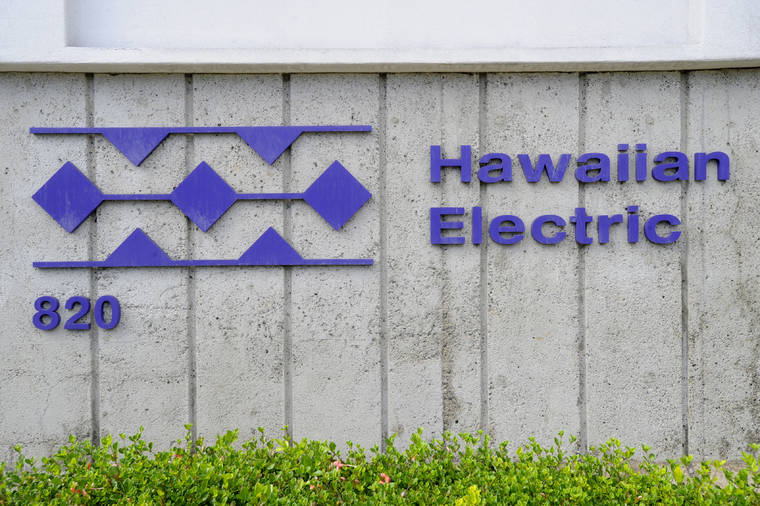If this past year was any indication, the state Public Utilities Commission will continue to press Hawaii’s major power companies to lower costs and more aggressively adopt renewable energy.
In 2019, the PUC ordered its first management audit of Oahu’s Hawaiian Electric Co. (HECO), which is asking for a rate increase.
The PUC ordered the ongoing management audit in September, the goal of which is to look into HECO’s leadership and project management.
On Nov. 13, the PUC then denied a temporary 3.5% rate increase proposed by Hawaiian Electric Light Co. (HELCO) on the Big Island. It could still grant a final rate increase, but the move represents the first time the commission has denied Hawaiian Electric Co. a temporary increase since 1996.
The PUC said in its decision that it was “not convinced at this time that HELCO has demonstrably shown it has undertaken reasonable efforts … to operate more efficiently.”
The commission has expressed dissatisfaction with how Hawaiian power companies — HECO, HELCO and Maui Electric Co. (MECO) — have been operating for years.
In a 2014 white paper, it said that given Hawaii’s electricity rates, which are the highest in the country, along with the increasing number of cheap renewable energy projects, customers should see falling and more stable electric bills.
Newer solar and wind projects in Hawaii have contracts to sell electricity between 10 and 20 cents per kilowatt-hour, much less than the 33 cents per kilowatt-hour residents paid in 2018.
Regarding the management audit, Will Giese, executive director for the nonprofit Hawaii Solar Energy Association, said on Nov. 13, “If you look … at the average electric bill and you look at these low utility-scale prices, it makes no sense to me why (HECO) would be asking for even more money, and I think that’s what the PUC is wondering about, too.”
Despite living in one of the most energy-efficient states in the country, residents still have an above-average monthly electricity bill.
The PUC said in a 2018 proceeding that “there are few financial incentives for the utility to employ cost-savings measures, to reduce electricity sales, to improve energy efficiency, to increase customer choice, to integrate customer-sited generation, or to establish new and innovative services.”
The commission called into question the traditional “cost-of-service” business model the companies and most other utilities operate under, which allows them to recover increased expenses by passing them down to customers in the form of higher electricity rates.
Utilities are encouraged to increase spending on maintenance and upgrade costs.
The commission began exploring a “performance-based rate” business model in 2018 for the Hawaiian Electric companies. The model would tie their revenues to certain goals, possibly ones that encourage cost-savings and renewable energy.
HECO has defended its effort to introduce renewable energy projects and stabilize electric prices but acknowledged the current need for fossil fuels.
“The goal is to transition off fossil fuels and exclusively use renewable resources to generate electricity by 2045. At the same time, we need to keep the lights on, maintaining safety and reliability,” Jim Kelly, vice president of corporate relations for HECO, said in a Nov. 23 statement.
He said that while renewable energy will be more cost-effective in the long term, right now some older solar and wind power plants sell electricity at a higher rate than some fossil fuel plants.
Hawaii was the first state to adopt a 100% renewable energy goal, which it plans to achieve by 2045. HECO reported the state produced 27% of its energy from renewable sources in 2018, up from 12% in 2011.
Eva Zlotnicka, a vice president of ValueAct Capital, a shareholder for HECO’s parent company, Hawaiian Electric Industries (HEI), downplayed how much credit should go to the companies.
“Customer-sited solar is an important source of distributed renewable energy and credit is largely due to the customers for taking this initiative, not to the company for allowing it,” she said in a Nov. 24 statement.
Nearly 40% of all the renewable energy produced in Hawaii comes from rooftop solar panels, according to the Hawaii State Energy Office.
San Francisco-based ValueAct Capital has criticized HEI’s commitment to renewable energy and urged it to look outside of the company for a change in management, referencing HEI’s current CEO, Constance Lau.

